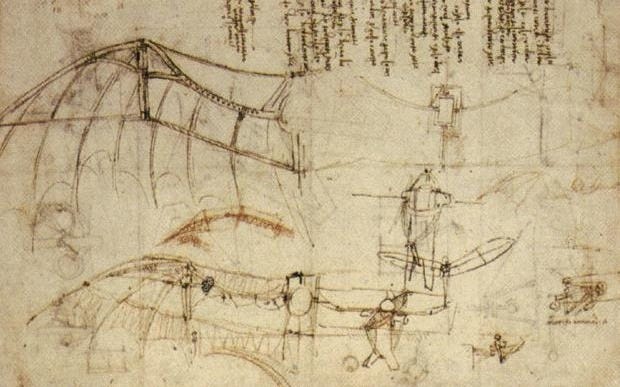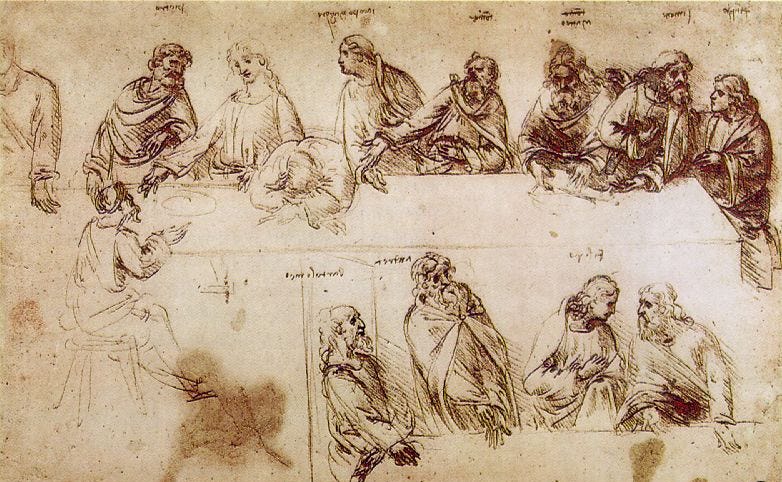Welcome to Mental Garden. The following letter is part of our "Notes on giants" collection, in which we explore the thoughts of humanity's greatest minds.
To see the full library, click here.
🏷️ Categoriess: Biology, Mathematics, Art, History.
In 1487, in his Milan studio, Leonardo da Vinci was avidly reading his notes.
He was reading his notes from the book De architectura by the Roman architect Marcus Vitruvius. In one of the passages in the book, its author stated the ideal mathematical proportions of the human body. This idea had obsessed thinkers for centuries, the perfect proportion, symbol of the union of the human being, mathematics and the cosmos.
Many minds sought to find this dreamed proportion.
But it was none other than Leonardo who managed to bring the idea to life.
That he has gone down in history is no coincidence.
Beyond symmetry, the Vitruvian Man is the metaphor of the Renaissance mind. In his time, humans were seen as unlimited beings capable of cultivating their skills to the highest level in all disciplines at the same time. That is the reason for the great cultural flourishing and the appearance of polymaths in this era.
This is precisely the Vitruvian Man, the ultimate representation of that union.
But this is just one of the many drawings in his notebooks, which are, without a doubt, a privileged window into the mind of an enormous genius.
Let's dive deep into its pages to discover all its mysteries...
A mysterious way of writing and a restless mind
The Vitruvian Man drawing itself has notes above and below the sketch where this mystery can be seen. Historians were perplexed to see that Leonardo wrote backwards, that is, from right to left and with the letters inverted.
Why is this?
The discovery sparked speculation, but it is believed that it could have been to protect his ideas or because he felt more comfortable since he was left-handed and often stained his notes by passing his hand while writing in the conventional way (Jones, 2012).
One of the many characteristics that made him unique.
Anatomy in detail
Leonardo drew with a precision and level of detail that is astonishing.
He dissected cadavers to understand the human body, a practice that was taboo in his time and had a controversial legal status, but he still did it to satisfy his curiosity to learn. His drawings look like they are taken from modern medical books.
My favorite drawing is of the human heart, where he identified the function of the aortic valve more than 300 years before modern science confirmed it.
Around 1510, Leonardo was working at the Hospital of Santa Maria Nuova in Florence. There he took advantage of the nights to dissect bodies and uncover their mysteries. One day he dissected the corpse of an old man who claimed to have been in good health before coming to the hospital (Keele, 2014).
There, illuminated by the light of an oil lamp, he dissected his body.
He made a revolutionary discovery, studying a coronary obstruction for the first time, the first documented description of this phenomenon.
«This old man, a few hours before dying, told me that he was more than a hundred years old and that he felt no pain in his body other than weakness. Sitting on his hospital bed, without any movement or other sign of mishap, he passed away from this life. I made an anatomy of him to see the cause of such a sweet death» (Perloff, 2013).
— Leonardo da Vinci
Engineering ahead of its time
Leonardo observed meticulously but also created with great ingenuity.
Influenced by his study of birds, he dreamed of flying and designed machines that could have made it a reality, but in his time there was no technology to materialize everything his mind was capable of imagining. Among his notes there are diagrams of what is today a helicopter, a hang glider, military weapons and countless other mechanisms for all kinds of uses.
This machine was used to cross the ditches and climb up the protected wall.
This suit would allow people to flap their wings like a bird.
Flawless art
You already know La Gioconda, but do you know the story behind this painting of his?
It took him 3 years to prepare.
During his preparation, he wrote down all kinds of information and reviewed his anatomy notes, analyzing human gestures and asking people to pose for him. Thanks to his holistic knowledge, he applied what he knew about anatomy to art.
“Before painting a figure, he first studied its nature and appearance. When he saw something that could be useful, he would draw it in pencil in the notebook he always carried. He would repeat this process as many times as he thought necessary to shape the work he had in mind” (Friedenthal, 1960).
— Giambattista Giraldi (Italian writer and philosopher) talking about da Vinci
Inspiration does not come by chance. It is cultivated with every observation, with every learning, with every note. If anyone came close to the Renaissance dream of embracing all knowledge and mastering all skills, it was Leonardo da Vinci.
Notes on this giant
Always carry something to take notes: Jot down any idea, no matter how small. Unexpected connections often emerge that result in great ideas.
Let your curiosity know no bounds: Don't restrict your learning to just one topic. Explore everything that sparks your interest; inspiration comes from combining them.
Visualize your thoughts: Use diagrams, drawings, and mind maps to shape your ideas. A picture is worth a thousand words.
Don't be afraid of perfection: Leonardo didn't finish many drawings and works. What's important is the learning process you go through page after page.
Da Vinci's notebooks remind us that with dedication and curiosity we can bring out the enormous potential we carry within. Never stop learning.
Be a polymath.
✍️ It's your turn: What struck you the most about your notebook? I was surprised that he dared to dissect bodies just out of curiosity at night. There is so much to say about this giant that it was hard for me to make a selection. Admirable.
💭 Quote of the day: “The noblest pleasure is that of understanding”. da Vinci.
See you next time! 👋
References 📚
Capra, F. (2008). The Science of Leonardo: Inside the Mind of the Great Genius of the Renaissance. National Geographic Books.
Friedenthal, R. (1960). Leonardo da Vinci : a pictorial biography.
Keele, K. D. (2014). Leonardo Da Vinci’s Elements of the Science of Man.
Jones, R. (2012). Leonardo da Vinci: anatomist. URL
Perloff, J. K. (2013). Human Dissection and the Science and Art of Leonardo da Vinci. The American Journal Of Cardiology, 111(5), 775-777. URL
The Notebooks of Leonardo Da Vinci (2020). Project Gutenberg. URL
Wallace, R. (1966). World of Leonardo: 1452-1519.














